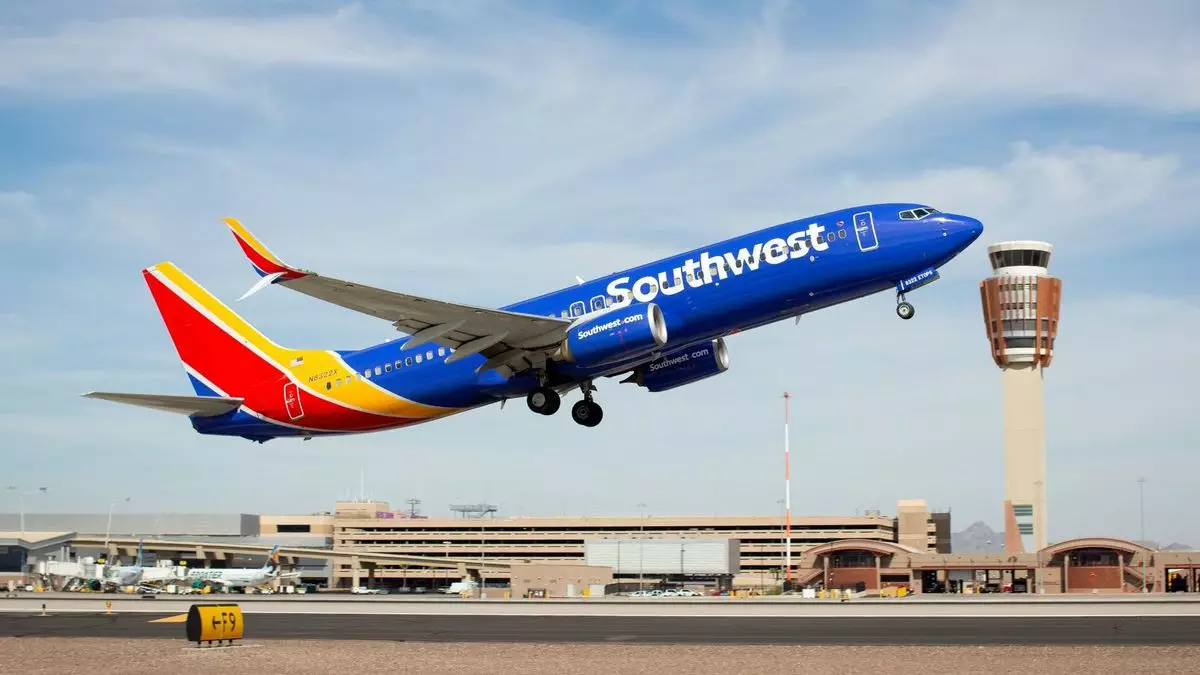In a significant move that reflects evolving travel demands, Southwest Airlines has officially launched its first series of red-eye flights. This exciting development marks the airline’s entry into the realm of overnight air travel. As of Thursday night, five new routes have taken to the sky, with flights stretching from vibrant hubs like Las Vegas, Los Angeles, and Phoenix to various destinations east of the Mississippi River. The inaugural flights were celebrated with a festive atmosphere, complete with gift bags and commemorative cards for passengers—an indication of the airline’s desire to create a memorable experience for travelers embarking on this new journey.
Currently, Southwest Airlines operates a total of five red-eye flights daily, connecting key cities such as Las Vegas to Baltimore and Orlando, Los Angeles to Baltimore and Nashville, and Phoenix to Baltimore. By June, this offering is set to expand significantly, with plans for 33 overnight flights per day. The strategic timing of this launch corresponds with a broader commercial initiative aimed at enhancing the airline’s financial performance, a struggle evident in the post-pandemic landscape. Southwest has faced stiff competition from industry giants like Delta and United, prompting a reassessment of its operational model and service offerings.
One of the standout advantages touted by Southwest in relation to these new red-eye services is improved aircraft utilization. By taking to the skies overnight, the airline aims to maximize usage of its fleet, effectively increasing operational efficiency. The impact of these flights extends beyond mere numbers; they represent an essential component of customer connectivity. For instance, the forthcoming Honolulu to Las Vegas overnight service is poised to boost itinerary options for passengers by a remarkable 50%, highlighting how red-eye flights can facilitate smoother connections within Southwest’s expansive network.
Looking ahead, Southwest has ambitious projects in the pipeline, including the introduction of assigned seating and extra legroom options set for 2026. This overhaul aims to align the airline more closely with customer expectations and industry standards, paving the way for a more intuitive flying experience. Alongside these changes, the airline has also revamped its operational strategies, incorporating cost-cutting measures that will underpin its efforts to restore financial vibrancy.
Moreover, the launch of red-eye flights coincides with Southwest’s renewed partnerships, notably its interline agreement with Icelandair—the first of its kind in decades. This collaboration is designed to enhance international connectivity, starting with itineraries bookable through Icelandair. As Southwest looks to expand this framework, it plans to introduce additional connecting points, further solidifying its foothold in the competitive airline market.
The initiation of red-eye flights and the accompanying strategic changes signal Southwest Airlines’ commitment to innovation and responsiveness to the evolving travel landscape. With a clear focus on operational efficiency and customer connectivity, the airline is poised to redefine its service offering and regain its competitive edge in the aviation industry.


Leave a Reply